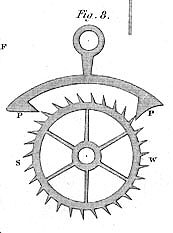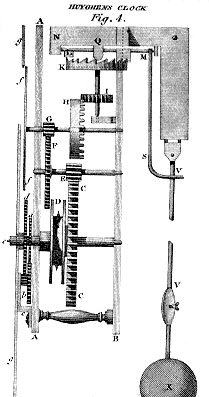The Pendulum Clock
Today, we attend the wedding of science and technology. The University of Houston's College of Engineering presents this series about the machines that make our civilization run, and the people whose ingenuity created them.
The early 17th-century philosopher Francis Bacon codified a radical change in our thinking. He wrote this in 1620:
The empire of man over things is founded on the sciences ... for nature is only to be commanded by obeying her.
On one level that statement is troublesome. Nature is female. We humans are male. Nature may be mother but she is there for her male heirs to command. The early Greeks put it differently: "Mastered by Nature, we o'ercome by Art." Art was, for the Greeks, any use of technique. It included all of technology.
By 1620 we'd readopted many of the old Hellenic ideals. Male dominance was only one of those. Another was the Aristotelian idea that by observing Nature we can control it.
Scientists and the people who built things lived in different worlds in 1620. The modern engineer could come into existence only after the people who made things had joined forces with the scientists. That happened for the first time in the West just after Bacon told us that "Nature is only to be commanded by obeying her," and it happened because people wanted to improve clock accuracies.
A mechanical clock depends on a mechanism called an escapement that moves back and forth in a steady rhythm. Most escapements were masses on the ends of a crossbar that rhythmically rotated back and forth on a shaft. But another kind of oscillation had a remarkable steadiness that could serve timekeeping:
In 1583 a young student at Pisa watched a swinging lamp in the Cathedral there. He was struck by its steadiness. The student was Galileo, and five years later he began his studies of pendulums -- studies which eventually showed that the period of oscillation of a gently swinging pendulum was always the same, whatever the amplitude of its swing. In 1602 he suggested using that steady motion of a pendulum to check the pulse of a patient.
By 1641 Galileo, now aging and blind, realized the pendulum would make an ideal escapement device because its pace stays steady while it runs down. He described the idea to his son Vincenzio, who made a working drawing of a pendulum clock. A machine was born of pure theory. The Dutch and English scientists Christian Huygens and Robert Hooke followed Galileo's idea, both with improved theories of the pendulum and with working clock designs.
None of this sounds impressive to our 20th-century ears. That's how things are supposed to work. Yet it was the first instance I can point to where a scientific principle preceded a technology. Ever since then, we've listened to Bacon's assertion.
We engineers today are trained to the teeth in science because we expect to have to submit to Nature before we deal with the physical world. Indeed, we have trouble seeing how radical this 350-year-old story really is, just because we've never imagined things working any other way.
I'm John Lienhard, at the University of Houston, where we're interested in the way inventive minds work.
(Theme music)
Usher, A. P., A History of Mechanical Inventions. Cambridge: Harvard University Press, 1970, Chapter XII.
Wolf, A., A History of Science, Technology, and Philosophy in the 16th and 17th Centuries. London: George Allen & Unwin, Ltd, 1950.
This is a substantially revised version of Episode 5.

A Pendulum Escapement Mechanism
Drawing by John Lienhard

Detail of the "Anchor Escapement"
From the 1832 Edinburgh Encyclopaedia

Huygens's Pendulum Clock
From the 1832 Edinburgh Encyclopaedia